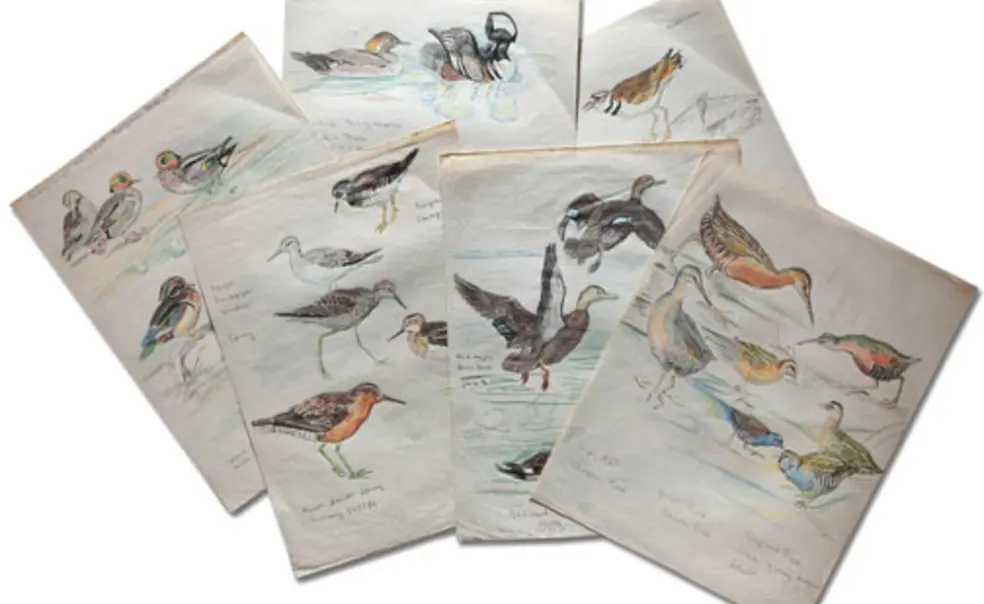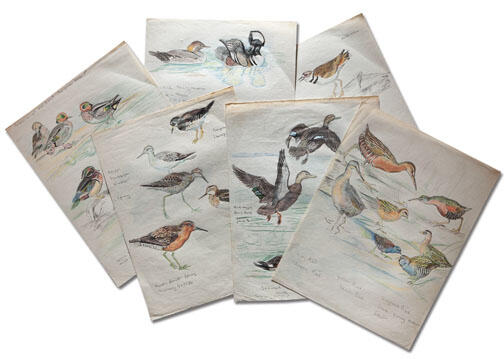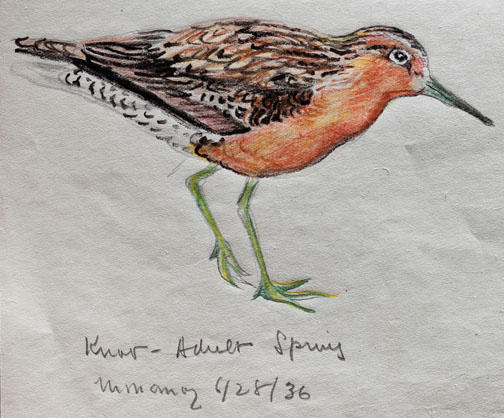From Princeton’s vault: Art of a bird-watching poet
What: Obscure today, John Peale Bishop ’17 once shone in a literary triumvirate with classmate F. Scott Fitzgerald and Edmund Wilson ’16. Poetry was his career, but art and bird-watching were lifelong hobbies, as these colorful 1936 watercolors attest.
As a sickly youth in West Virginia, Bishop dreamed of becoming a painter and idolized the bird artist John James Audubon. Soon he was writing nature verse. At Princeton he awed peers with his poet-like hauteur. Inspired by Bishop to take himself seriously as a writer, Fitzgerald wove his friend into This Side of Paradise as the aesthetic highbrow Tom D’Invilliers.
Years spent living in France with his heiress-wife isolated the aloof Bishop, and his career sputtered. During the Depression he moved to Cape Cod, building an oceanfront mansion, Sea Change, and spending hours bird-watching in the salt marshes.
Shocked by the death of Fitzgerald in 1940, a melancholy Bishop returned to writing verse, as his own health failed. He died in 1944 at 51. Sea Change is now an upscale hostelry with a name that plays on the Fitzgerald connection: Our Great Gatsby.
Where: John Peale Bishop Papers, Manuscripts Division, Department of Rare Books and Special Collections, Firestone Library














1 Response
Guy Tudor ’56
9 Years AgoSourcing a poet's art
I was intrigued by “Art of a bird-watching poet” (Campus Notebook, Feb. 9), particularly the accompanying illustrations. I’d like to set the record straight.
While I cannot comment on John Peale Bishop ’17’s writings, I am obliged to point out that his bird paintings are direct copies not of Audubon (his “idol”), but of the next great American bird artist, Louis Agassiz Fuertes. Of the six examples shown, all can be matched exactly with Fuertes’ color plates in Birds of Massachusetts and other New England States, by Edward Howe Forbush, 1929.
To be charitable to Bishop, let’s assume these paintings were intended to be studies, in the time-honored tradition of copying the masters. That is how we all learned our craft.